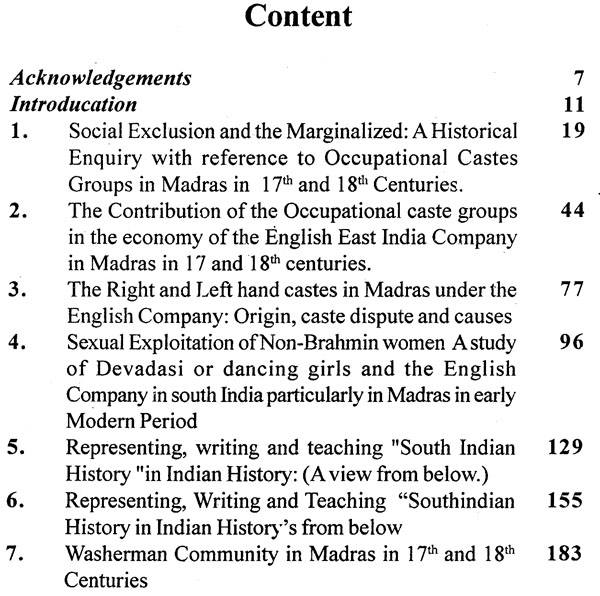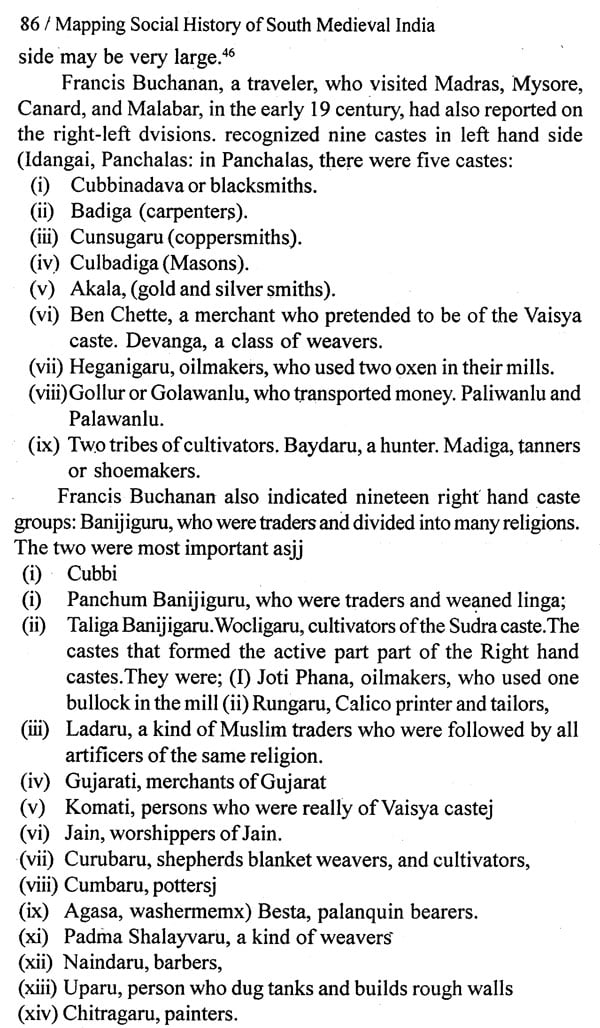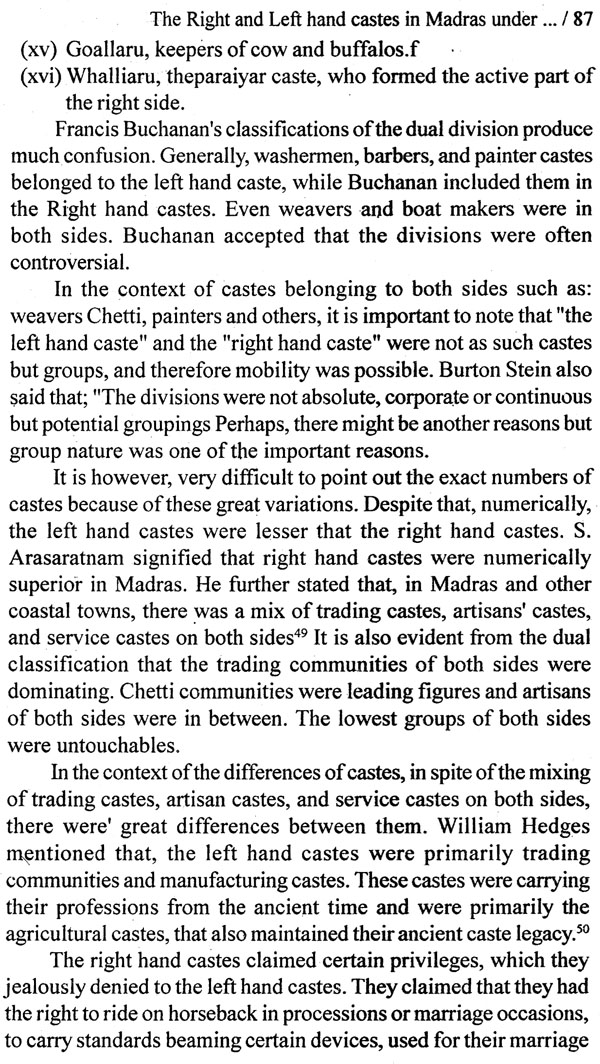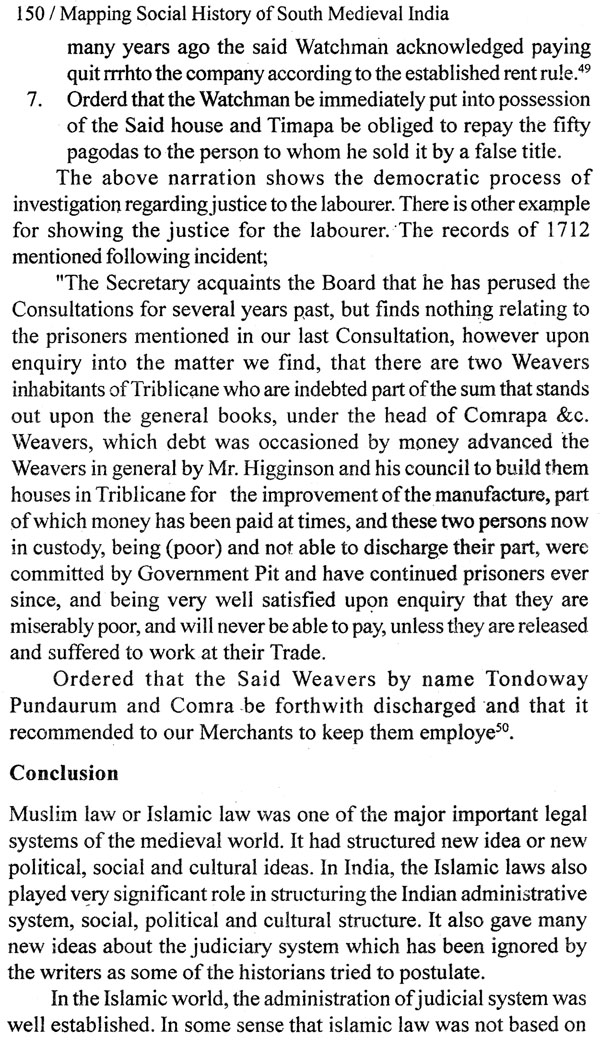
Mapping Social History of South Medieval India
Book Specification
| Item Code: | NAV462 |
| Author: | Vikram Harijan |
| Publisher: | Kanti Publications, Delhi |
| Language: | English |
| Edition: | 2013 |
| ISBN: | 9788173120978 |
| Pages: | 191 |
| Cover: | HARDCOVER |
| Other Details | 9.00 X 6.00 inch |
| Weight | 320 gm |
Book Description
Geographically speaking, Southern India is the area encompassing India's states of Andhra Pradesh, Karnataka, kerala and Tamil Naddu as well as the union territories of Lakshadweep and pondcherry, occupying 19.31% of area. South India lies in the peninsular Deccan Plateau and is bounded by the Arabian Sea, India Ocean and the Bay of Bengal in the west , south and east respectively. The geography of the region is diverse, encompassing two mountain ranges the Western Ghats and Eastern Ghats and a platesu Heartland. Godavari, Krishna, Tungabhadra and Kaveri rivers are important non-perinnial sources of water. Inhabitants of Southern India are referred to as South Indian. A majority of South Indians speaks one of the five Dravidian languages Kannada, Malayalam, Tamil Telugu and Tulu. During its history, a number of dynastic kingdoms ruled over parts of South India whose invasions across southern and southeastern Asia impacted the history and cultures of modern nation- states such as Sri Lanka, Indonesia Thailand and Malaysia. The region was colonized by Britain and gradually incorporated into the British Empire.
Historically speaking, the history of South India covers a span of over two thousand years during which the region saw the rise and fall of a number of dynasties and empires. The period of known history of the region begins with the ancient period during which the great king Ashoka ruled over most of the Indian subcontinent. The dynasties of Satavahana, Chera, Chola, Pandya, Kakatiya and Hoysala were at their peak during various periods of history. These kingdoms constantly fought amongst each other and against external forces. Vijayanagara Empire rose in response to the Muslim intervention and covered the most of south India and acted as a bulwark against Mughal expansion into the south. When the European powers arrived during the 16th century CE, the southern kingdoms were not powerful enough to resist the new threat and eventually succumbed to British occupation. The British created the Madras Presidency, which covered most of south India directly administered by the British Raj, and divided the rest into a number of dependent princely states. After Indian independence South India was linguistically divided into the states of Andhra pradesh, Karnataka, Kerala and Tamil Nadu.
The study of the occupational caste groups and their activities in India in the early modern phase is an important theme of study. It is equally difficult to state with exactitude about the occupational caste groups because of this complexity and their changing states especially in South India. To define 'occupational caste groups' is problematic. Generally, Sudras, untouchables, artisans, different caste groups (Left and Right Hand), who were engaged in different factories, agriculture fields as a laborers, workers, slaves, servants, etc., on the basis of their accumulated hereditary works or different occupations or set by the society, may called 'occupational caste group'. However, these occupational caste groups competed to get the 'noble' and 'clean' professions. As such with this process, the occupational caste groups gradually gained new identity in course of time. The first three chapters devoted to the occupational castes groups and related issues.
Historians have ignored the work on the lower caste women in the writing of the Indian history. They have written on women in general but they did not focus seriously on the lower caste women in the history. Interestingly enough, Devdasi system was originated in ancient times and it was regular in Medieval, colonial period .In the pleasure of sex, the upper caste, the sultans and even the English official particularly the Governor, Agent and other prominent official were involved. Although several law brought by the English company which ban dancing girls form the becoming of the devdasi.These laws were very much beneficial to the dancing girls. Nonetheless this profession was regular and it became a caste based occupation later on .Many castes were involved barring Brahmins which shows the caste prejudice. This article try to focus the origin of Devdasi,why they become Devdasi,which castes were involved in this occupation what were the role of the English company in this occupation. However I am largely based on the Abbe J.A. Dobious and record of fort st George recoMs. Chapter four deals with Devadasi system in Medieval south India.
The dominant historiography of various School of historians like Cambridge School of historians, The Oxford School of historians and different school of historians of India like Aligarh School of historians, Allahabad school of historians, Delhi school of historians, Calcutta School of historians andJawaharlal Nehru University school of historians have ignored the representation of "South Indian History" in "In Indian history" largely. Very few historians of dominant historiography have done some work on South Indian but Their representation are very nil in comparison of "North Indian History" that is "Indian History".
Indian History to me is "North Indian History". Meaning thereby only "North Indian history" has dominated in so called "Indian history" by ignoring the various geographical part of India like North-East History, South Indian History so on. "A View from below" to me is those who are in bottom line in true sense in Caste Structure like Untouchables, Backwardess classes, Labourer Castes, Laboring women, various tribes and so on. India is basically a Castes based society and thus Historians have ignored so-called lower castes history. Meaning thereby "A view from below" to me is: Lower Castes people history, Lower Caste women history and Tribes history. Govt.runs reputed Educational National fame bodies like NCERT "National Council of Educational Research and Training" and an IGNOU "Indira Gandhi National Open University" books on History also ignores the mentioned Historiography
**Contents and Sample Pages**












